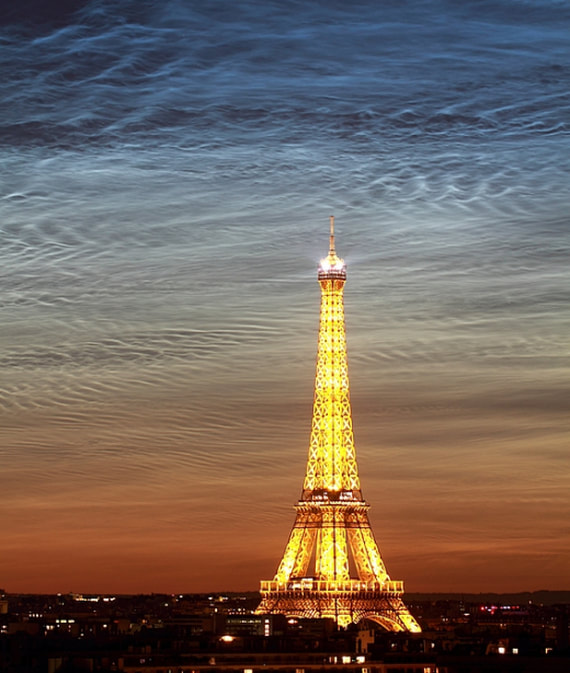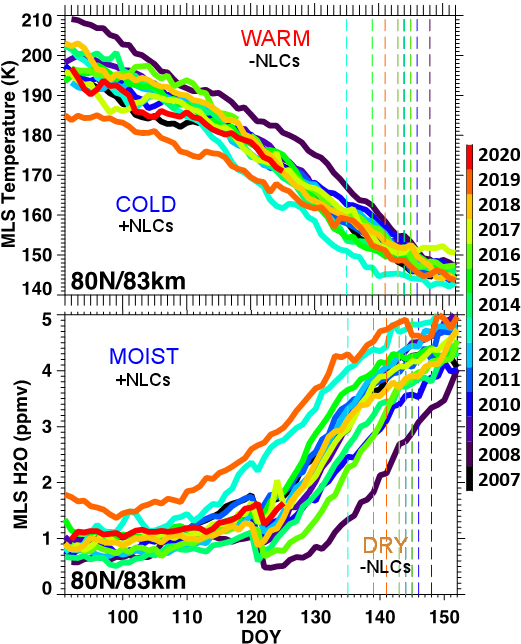NLCs are Earth's highest clouds. Seeded by meteoroids, they float at the edge of space more than 80 km above the ground. The clouds form when summertime wisps of water vapor rise up to the mesosphere, allowing water to crystallize around specks of meteor smoke. In the northern hemisphere, noctilucent cloud season typically ranges from mid-May through mid-August.
Given that 2019 was such a record-breaker, researchers are naturally wondering what will happen in 2020. Could NLCs spread even farther south? To try to answer that question, Lynn Harvey of the University of Colorado's Laboratory for Atmospheric and Space Physics has taken a look at data from NASA's Microwave Limb Sounder (MLS). She prepared the following plots, which show moisture and temperature in the mesosphere for the past 14 years--including 2020:
"So far, 2020 is shaping up to be fairly average," says Harvey. In other words, 2020 does not look a repeat of 2019. This summer's clouds might be confined to higher latitudes again.
No one will know for sure, however, until NLC season actually begins. Daily images of NLCs from NASA's AIM spacecraft are posted right here on Spaceweather.com. "Based on the MLS data, I would guess that the first NLCs will be spotted in two weeks or so," she says. Stay tuned to see if the forecast is correct!
www.spaceweather.com


 RSS Feed
RSS Feed